Each year across the western states Greater Sage-Grouse begin to fly into leks on the sagebrush steppe during late winter and early spring to perform their fascinating courtship displays well before the first sign of dawn.
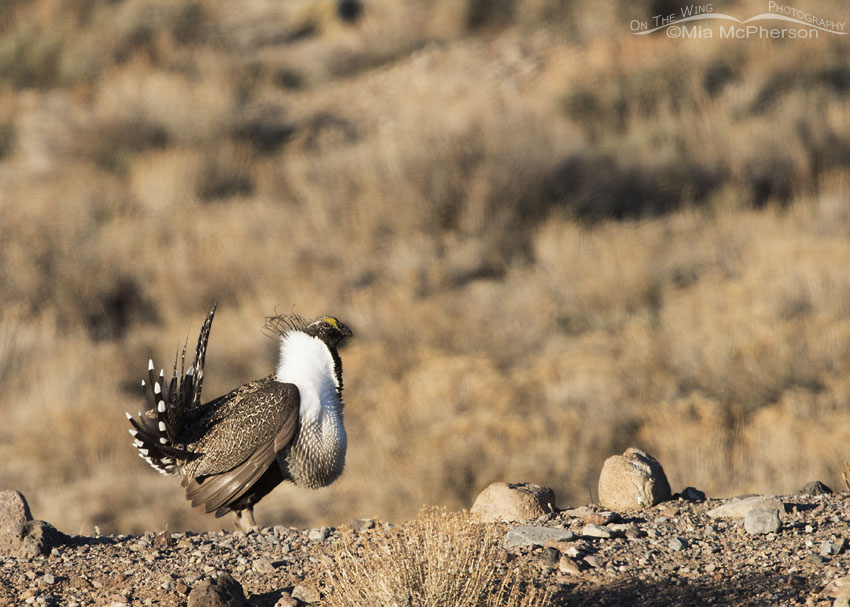 Dawn on a Greater Sage-Grouse lek – Nikon D810, f8, 1/500, ISO 400, Nikkor 500mm VR with 1.4x TC, natural light
Dawn on a Greater Sage-Grouse lek – Nikon D810, f8, 1/500, ISO 400, Nikkor 500mm VR with 1.4x TC, natural light
Greater Sage-Grouse Lek Photography Guidelines
Anyone wishing to see this yearly ritual should arrive on the lek well before daybreak so as to not disturb the grouse.
Stay in your vehicle! Do not exit your vehicle to get closer or get a better shot.
If the grouse are disturbed and fly away they won’t be back again that day and no mating will occur.
You also need to be prepared to stay until the last bird finishes his display and leaves the lek for the sake of these birds. They face enough hurdles nowadays as it is. Please don’t be one of those hurdles.
Talk softly, don’t turn on your engine to get warm if you are in a vehicle. Pee before you get there. Dress warmly. Turn down the volume on your cell phone or set it to vibrate.
Additionally, on nights with a full moon it might be best to stay away from the leks because the grouse can and do display all night long. Don’t use flash. Or electronic playback of calls.
Always put the well being of the birds before the photos.
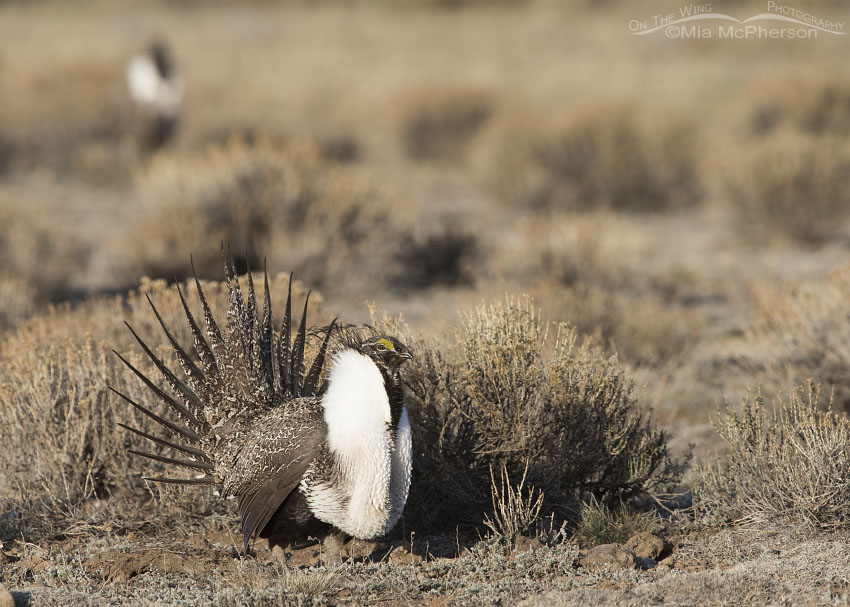 Greater Sage-Grouse on a frigid morning – Nikon D810, f8, 1/1000, ISO 640, Nikkor 500mm VR with 1.4x TC, natural light
Greater Sage-Grouse on a frigid morning – Nikon D810, f8, 1/1000, ISO 640, Nikkor 500mm VR with 1.4x TC, natural light
If you do go be prepared to feel amazed by their courtship display, to have it touch something deep inside you. Even before the sun comes up you can hear the pops and whistles that are created when the males inflate the yellow air sacs in their necks. In the dark you can see the males moving around the lek because of the white feathers on their necks, it can look kind of ghostly.
As dawn breaks and the sun comes up the dancing and strutting increases.
Lek Photography Advice
My advice for anyone who does go to photograph the Greater Sage-Grouse on their leks is to start off with high ISOs then decrease that as the light gets brighter. Also, take a lot of images, I know it is a pain to cull hundreds of images but having more images gives you more choices when you are done photographing these birds. From one frame to the next movement can happen that makes one image more appealing to your eyes.
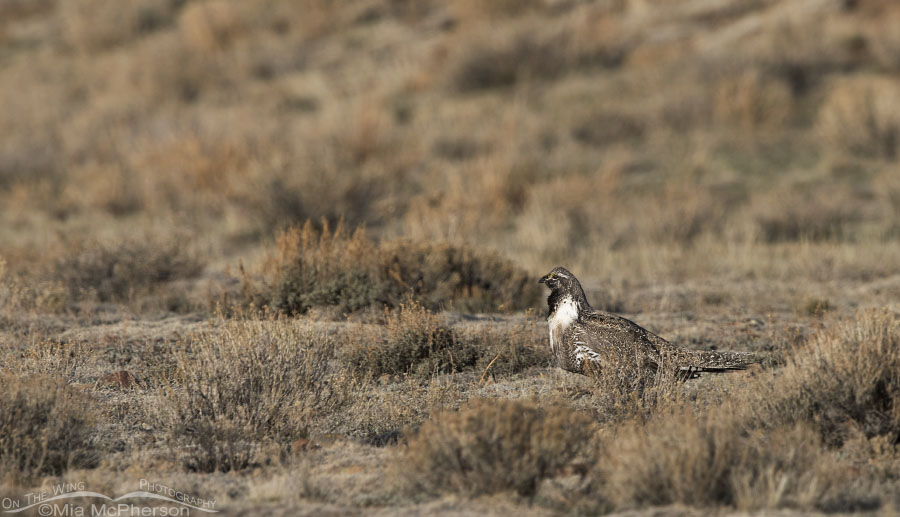 Male Greater Sage-Grouse at the edge of the lek – Nikon D810, f8, 1/800, ISO 400, -0.3 EV, Nikkor 500mm VR with 1.4x TC, natural light
Male Greater Sage-Grouse at the edge of the lek – Nikon D810, f8, 1/800, ISO 400, -0.3 EV, Nikkor 500mm VR with 1.4x TC, natural light
I can only speak for myself but I feel so privileged to watch these grouse dancing on their leks, it is a mesmerizing display. To watch the males scuffle, tossing bits of soil and vegetation into the air with their movements and then to see them separate with hardly a feather out of place. Watching the males on the edge of the lek I wonder if they will join in on the ritualistic display.
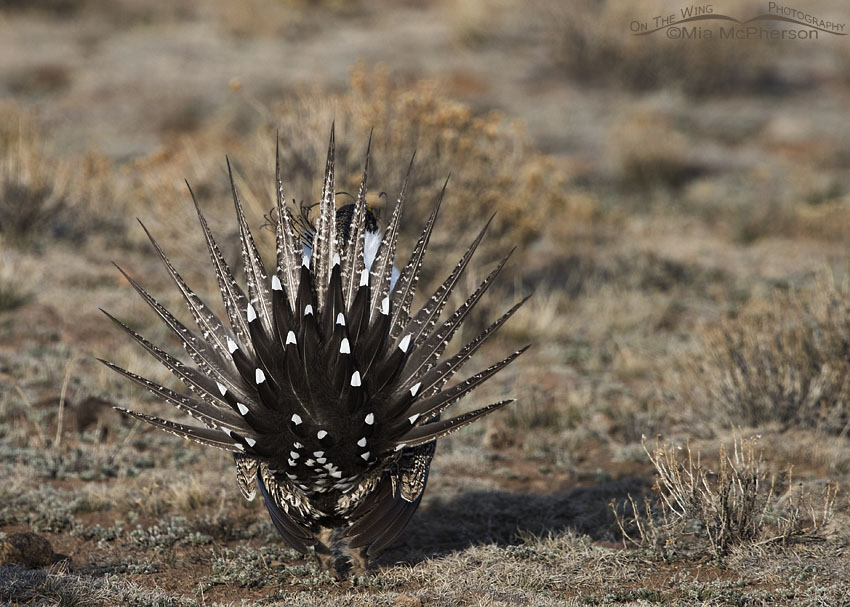 Spread tail of a male Greater Sage-Grouse – Nikon D810, f8, 1/640, ISO 400, -0.3 EV, Nikkor 500mm VR with 1.4x TC, natural light
Spread tail of a male Greater Sage-Grouse – Nikon D810, f8, 1/640, ISO 400, -0.3 EV, Nikkor 500mm VR with 1.4x TC, natural light
As handsome as these Greater Sage-Grouse are from the front or side a view of the back of their tails is interesting because of the way they spread their tails feathers and the tail feather patterns are attention grabbing too. I don’t mind butt shots of these grouse at all.
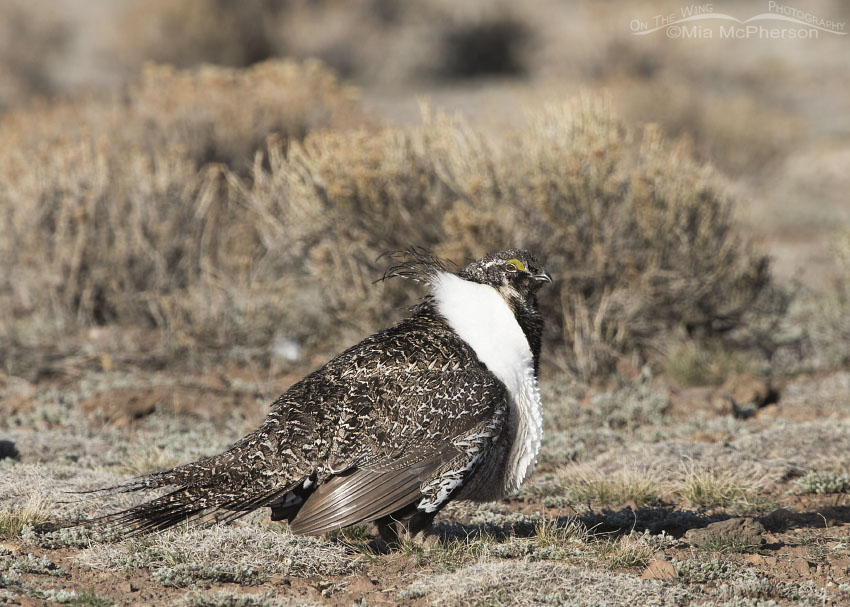 Male Greater Sage-Grouse on a high sagebrush steppe – Nikon D810, f7.1, 1/1000, ISO 400, Nikkor 500mm VR with 1.4x TC, natural light
Male Greater Sage-Grouse on a high sagebrush steppe – Nikon D810, f7.1, 1/1000, ISO 400, Nikkor 500mm VR with 1.4x TC, natural light
After mating with the male grouse the female leaves the lek area and she’ll be on her own to raise the next generation of Greater Sage-Grouse, the males don’t help the females with nest area selection, incubation or rearing the six to nine young.
Be prepared to want to go back and watch the Greater Sage-Grouse courtship display again. Seeing it once will not be enough, take my word on that.
Life is good.
Mia
Click here to see more of my Greater Sage-Grouse photos plus facts and information about this species.


It is time for me to comment, after enjoying, treasuring, your photography subjects for so long. So a huge THANK YOU for the joy of your
craft.
I love seeing birds I’ve never seen before on this site. So beautiful. Thanks for the info!
Wonderful article, advice, and of course your pics Mia. Hope to someday get a chance to observe and photograph this species as well.
One of the things I love most about you is your personal integrity in capturing these outrageously spectacular!! Personal integrity is right at the top of my list of vitally importantly qualities in humans and it is so very rare these days. When I encounter it, I’m reminded that there are humans who respect and honor the Earth and her other cultures. It’s oh so refreshing and gives me hope again!! Thank you SO much for that!
We MUST protect their right to dance on their leks forever. We just MUST!
An emphatic yes from here too.
And I smiled at the pee before you go part of your excellent advice. How true it is.
Once again, I am as impressed with your integrity, comments and good advice as I am with your amazing photos…you are a true gem…I am so doggoned lucky to have found you.. Especially now when there is so much depressing, outrageous evil on the loose….
Wow! Amazing! Also loved your dos & donts!
Thanks Mia for the excellent advise and pictures! I’m going to go up and try it this year.
Amazing photos, Mia.
Beautiful birds. I will have to be content to view them through your camera lens, which is fine because you bring them to life.